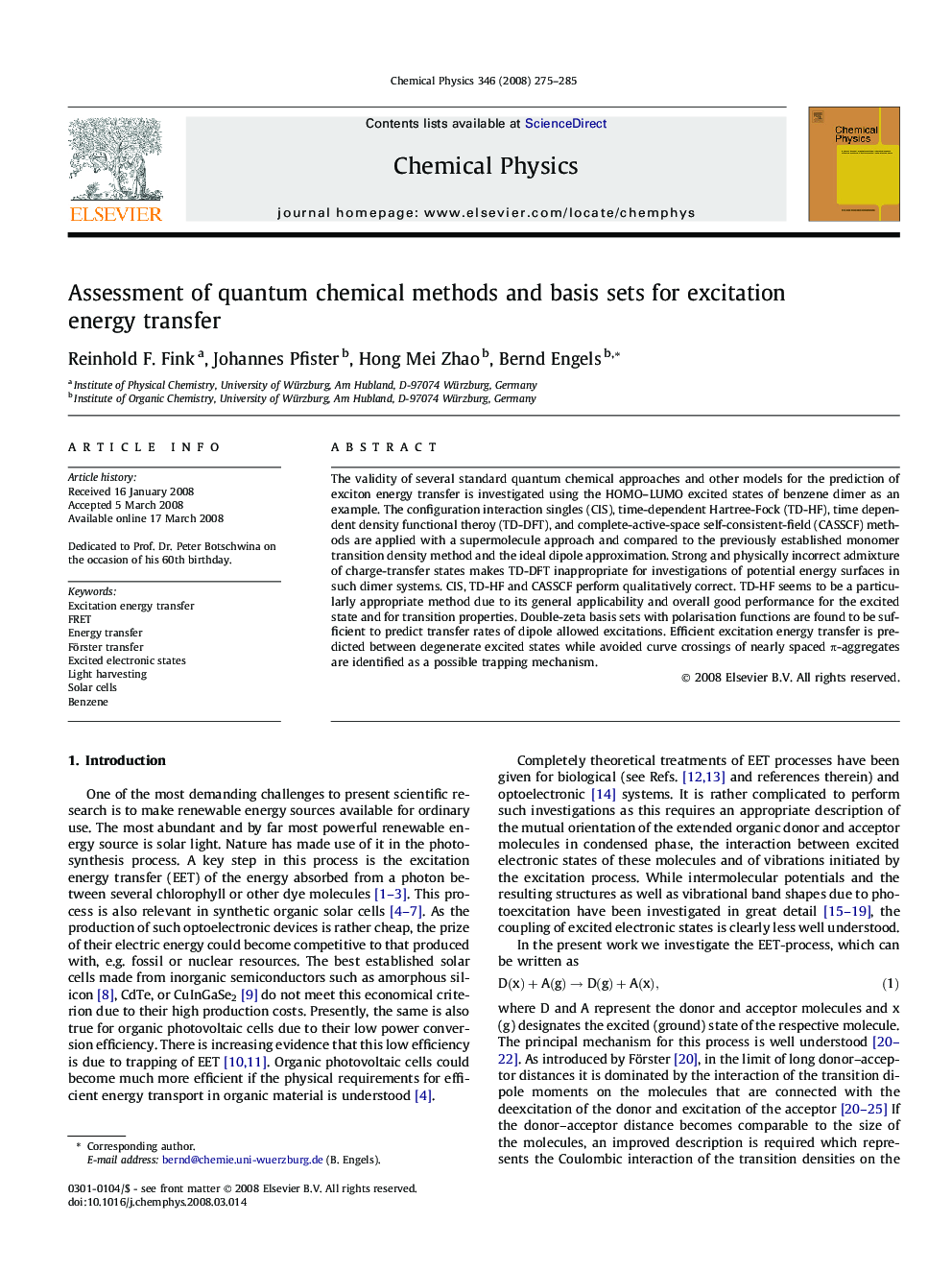| Article ID | Journal | Published Year | Pages | File Type |
|---|---|---|---|---|
| 5376073 | Chemical Physics | 2008 | 11 Pages |
Abstract
The validity of several standard quantum chemical approaches and other models for the prediction of exciton energy transfer is investigated using the HOMO-LUMO excited states of benzene dimer as an example. The configuration interaction singles (CIS), time-dependent Hartree-Fock (TD-HF), time dependent density functional theroy (TD-DFT), and complete-active-space self-consistent-field (CASSCF) methods are applied with a supermolecule approach and compared to the previously established monomer transition density method and the ideal dipole approximation. Strong and physically incorrect admixture of charge-transfer states makes TD-DFT inappropriate for investigations of potential energy surfaces in such dimer systems. CIS, TD-HF and CASSCF perform qualitatively correct. TD-HF seems to be a particularly appropriate method due to its general applicability and overall good performance for the excited state and for transition properties. Double-zeta basis sets with polarisation functions are found to be sufficient to predict transfer rates of dipole allowed excitations. Efficient excitation energy transfer is predicted between degenerate excited states while avoided curve crossings of nearly spaced Ï-aggregates are identified as a possible trapping mechanism.
Keywords
Related Topics
Physical Sciences and Engineering
Chemistry
Physical and Theoretical Chemistry
Authors
Reinhold F. Fink, Johannes Pfister, Hong Mei Zhao, Bernd Engels,
